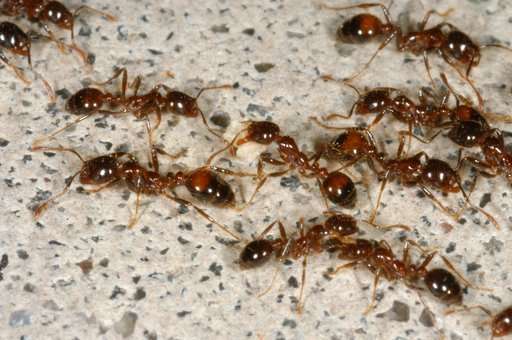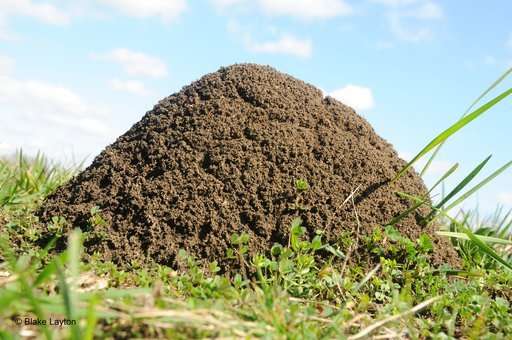Efforts aim to limit the spread of fire ants in the US

They sting, damage crops and wildlife, and are extending their range in the United States.
Imported fire ants are unwelcome guests here, and careless plant shipping helps them spread.
A colony was discovered this spring in palm trees sent from Florida to Delaware, a state where the stinging insects have not yet become established.
Two different fire ant species were introduced a century or so ago into Mobile, Alabama, hidden in soil ballast on cargo ships from South America, the U.S. Dept. of Agriculture says. Since then, they've infested 14 mostly southern states and Puerto Rico, where they have had a huge and detrimental impact on agriculture and natural resources. They continue their advance, with the USDA predicting they eventually could reach from the Pacific Northwest to parts of the mid-Atlantic.
Well over $5 billion is spent each year on medical treatment, prevention and control in fire ant-ridden areas, the agency says. Agricultural damage alone is estimated to cost more than $750 million annually, primarily for equipment and crop damage and livestock losses.
"As an urban pest, IFA (Imported Fire Ants) are a nuisance pest and can cause allergic reactions including rare instances of anaphylactic shock in humans," the USDA says.
Fire ants are particularly hazardous when encountered at nursing homes, day care centers, schools and playgrounds.
A federal quarantine requires that state inspection certificates be displayed showing that flora and potting soil from the invaded areas are fire-ant free before they can be sold.
Imported fire ants hitch rides in sod, hay bales and nursery stock. Mated queens fly into new areas. Rafts of flooded colonies like those displaced recently by Hurricane Harvey in Texas also claim fresh terrain.
Both fire ant species—black and red—are similar, said Blake Layton, an extension entomologist with Mississippi State University. "Controls are the same. Stings feel the same," he said.
Fire ants are venomous. Their stings typically cause a burning sensation and fluid-filled blisters lasting several weeks. Fire ants also destroy a wide variety of wildlife, especially ground-dwelling birds.
Fire ants can be controlled but not eliminated by using granular baits and broadcast insecticides.

"Poisonous baits are pretty efficient," Layton said. "Ants carry them back to their mound and kill the queen. But it's got to be a long-term effort."
Prevention is the most common deterrent.
"Do not buy anything that has not been inspected," Layton said. "The real risk is having somebody come down here on a trip and taking potted plants home. Those plants have not been inspected."
Climate does limit the ants' range.
They don't like dryness and low temperatures, said Mike Merchant, an Extension entomologist with Texas A&M University.
"They need access to soil moisture. And they can't survive prolonged temperatures in the teens or below that reach deep into their (underground) burrows," he said.
Widespread management is necessary to stop them from moving into new territories, Merchant said.
"In Texas, we have neighborhood associations that band together for 'Treatment Days'," he said. "They parcel out pesticides to property owners to help keep fire ants in check. Most of the people get on board."
More information: For more about fire ants and the threat they pose in the United States, see this Texas A&M University study: articles.extension.org/sites/default/files/Copy%20of%20the%20National%20Study.pdf
© 2017 The Associated Press. All rights reserved.


















